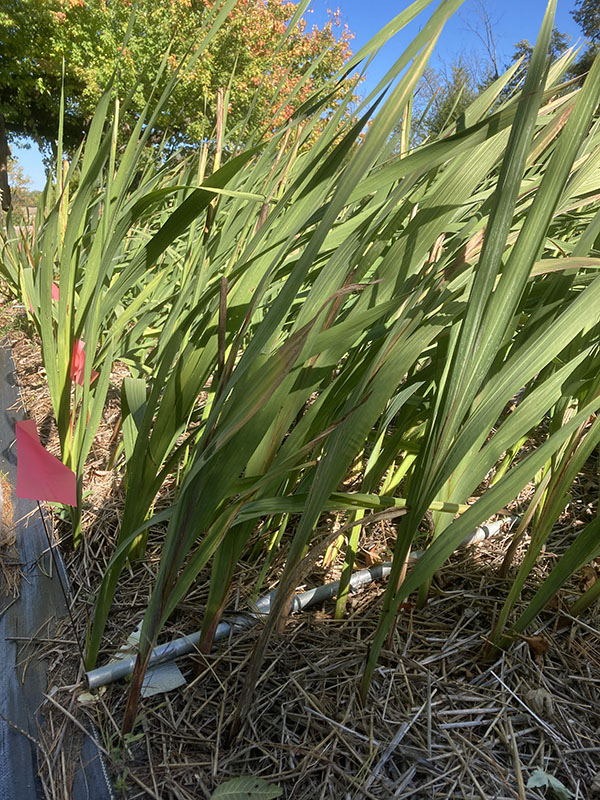
Many parts of the country experienced hot, dry summers this year and so thrips and spider mites may have been more of a problem than usual. If your leaves look damaged or stunted, the problem is most likely thrips. If you see any form of webbing, you probably have spider mites. Mites can be smothered by spraying with Neem oil, while an insecticidal soap spray can help with thrips (see more thrip measures here.). You can also do this simple test to see if you have a problem: put a white sheet of paper against the foliage about half-way up and shake the plant. If you see little dots on the paper, you probably have thrips and/or spider mites, just not in high enough numbers to be more visible.
In zones 8 and warmer (lows to 10° F), glads can stay in the ground year round. They often survive winters in zones 7, 6, and even 5, too, according to many of our customers. (Learn more at our Surprisingly Hardy Glads page.) As with dahlias, you don’t have to dig and store your glads, but if you’d like to try to preserve (or even increase) a rare variety, dig 5-6 weeks after flowering or in the fall. If you wait till the foliage dies, cormels (small daughter corms) are likely to split off into the ground, so dig when the foliage is starting to turn yellow for a better chance of keeping them. Cut the stalk off as close to the corm as possible. Experts often recommend a 5-minute fungicide dip, or you can dust them with an insecticide/fungicide, or do nothing. Air dry for a few weeks and store in mesh or paper bags in a cool, dry place with good air circulation, ideally at 35-45F, but definitely above freezing.











